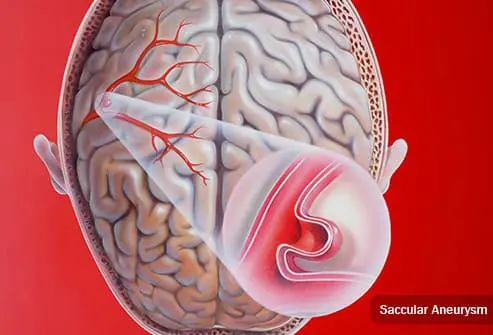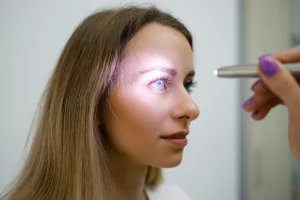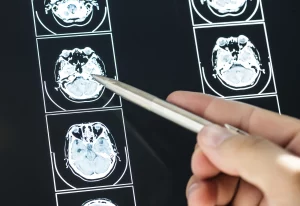What is brain aneurism which is also known as bubble formation in brain? Which symptoms does it give and what are the treatment methods? Prof. Dr. Engin Çakar explains for you.
Aneurism is the weakening and ballooning outwards of an arterial wall in time. The ballooned part may cause bleeding by rupturing.
When this happens in the artery of brain, it is named as brain aneurism or bubble formation colloquially. Many people with brain aneurism are not aware of this situation. However, if the aneurism bursts, brain hemorrhage and brain injury may ensue consequently.
When the brain aneurism bursts, brain hemorrhage happens, and this causes the situation which is called as hemorrhagic stroke. The brain tissues are damaged and start to die because of the bleeding and edema formation. Paralysis symptoms may develop, or the patient may fell into coma.
You may be interested in: “What are the Symptoms of Stroke (Paralysis)?”

Symptoms of Unruptured Brain Aneurysm
Small aneurisms in brain may not cause any complaints. Many people are not aware of aneurism formation in their brain. However, bigger aneurisms may pressurize the brain tissues and cause some complaints:
- Headache
- Balance disorders
- Difficulty in speaking
- Pain above or behind the eye
- Problems such as double vision or visual loss
- Numbness or weakness on one side of the face

Symptoms of Brain Aneurism
When the bubble formed in brain (aneurism) bursts, a sudden and severe headache may happen. The persons may define this ache as the most known ache to them. Besides, these symptoms may be observed when the brain aneurism bleeds:
- Clouding or loss of consciousness
- Having seizures
- Blurred or double vision
- Pain or stiffness which expands to the neck area
- Nausea and vomiting
- Weakness which develops suddenly on one side of the body
When symptoms like these occur to you or one of your relatives, you need to consult to a health institution immediately.

What are the Risk Factors of Brain Aneurism?
There are some risk factors which affect the formation of bubbling in brain. The unchangeable risk factors are age, family history and sex:
- Brain aneurisms are mostly seen in persons above the age of 40
- It is seen in women more frequently than men,
- It is seen more frequently in the persons who has a family history of brain aneurism.
On the other hand, some risk factors can be altered and thus the brain aneurism risk may be decreased. The changeable risk factors are general health condition and lifestyle. Arteriosclerosis and hypertension increase the risk of brain aneurism. Therefore, these persons should be under regular doctor control and adapt to the treatment they are given. Besides, excessive alcohol consumption, smoking and illegal substance usage also increases the risk of brain aneurism.

The treatment of unruptured brain aneurysms depends on the probability of bursting of the bubble. The probability of aneurysm bursting depends on where the bubble forms and its dimensions, the person’s age, general health condition and family history.
If the aneurysm’s probability of bursting is low, your doctor may ask you to come for regular check-ups to be able to follow this up. Meanwhile, you may need to lose weight, have a healthier diet and make changes to improve your general health condition. If the probability of aneurysm bursting is high, interventional treatments may be needed to prevent it.
Ruptured brain aneurysms can be treated in two different ways: Open brain surgery or interventional treatment. The dimension, shape and location of the aneurysm are considered to decide the correct treatment method.
A ruptured aneurysm in brain and brain hemorrhage can cause brain injury and paralysis in the person. After emergency medical interventions are performed and the general condition of the person stabilizes, physical therapy rehabilitation applications are started as soon as possible to prevent paralysis.
Reference: webmd.com

